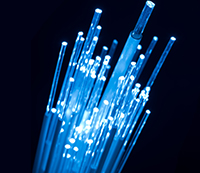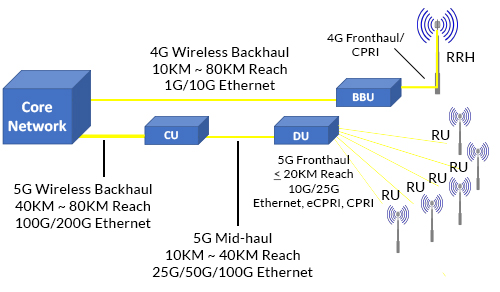Bringing New Light to Fiber
By: Ray Hagen

The hype around impending 5G wireless rollouts could place the reader into one of two camps. The realist camp may say 5G wireless is just like the first generation of broadband services in the early part of the century. There is great hype around the endless possibilities afforded by high-speed Internet, but without tangible ‘killer apps’ to drive adoption, it’s unclear how to justify the massive investment. Deloitte Consulting estimates that fiber infrastructure investment of $130B to $150B will be required to build out 5G across the United States over five to seven years—let alone the rest of the world.
Visionaries may state that 5G will offer access to new applications like artificial intelligence and smart city infrastructure that could define the next industrial revolution. Companies and countries failing to act now will find themselves left behind global and regional powers that are indeed investing in 5G. As we navigate the post-COVID 19 world, we are finding that economic and social survival is tied to the ability to work and play at a distance. If ever there was a time for a revolutionary new Internet technology to take hold, now would seem to be it.
Wireless backhaul services have evolved to grow the size of the data pipe to mobile sites from copper TDM (time-division multiplexing) circuits delivered to multiple lit 1G or 10G Ethernet services over fiber for 4G LTE. Traditional backhaul has developed into a patchwork of mobile provider owned-and-operated fiber to leased dark fiber and lit fiber services. Wholesale backhaul services in the 4G and earlier environment were simple and straightforward. A backhaul provider could drop a 24-core or 48-core fiber or a WDM (wavelength division multiplexing) trunk at a mobile site and be assured of the fiber capacity for current and future data needs. Over time, service providers of all sizes have relied upon backhaul services as a source of revenue and a means to see new fiber builds.
Market disruption
5G wireless presents a radical new architecture heavily dependent upon a fiber-optic infrastructure, as fiber will be required in areas closer to the user where in-ground fiber may not yet exist. 5G wireless introduces the virtualization and disaggregation of the BBU (baseband unit) and RRH (remote radio head) functions across multiple network elements (cleverly titled the CU for Central Unit, DU for Distribution Unit, and RU for Radio Unit). These network elements pool the resources for multiple radio units into one DU and CU unit (whereas 1 BBU per radio site is used for 4G). Distributing these resources into the outside plant results in 5G “x-Haul” architecture with potential market disruptions and/or opportunities for backhaul service providers. Major wireless service providers have been preparing for the fundamental change in the fiber infrastructure by investing heavily in local fiber access by both organic and inorganic means.

Figure 1 – 4G Backhaul and 5G “x-Haul”
Figure 1 (above) contrasts the largely point-to-point traditional wireless backhaul, possibly on a fiber ring or on a single fiber run with 5G’s distributed architecture, against 5G x-Haul. 5G’s x-Haul architecture will aggregate data from multiple radios to



















